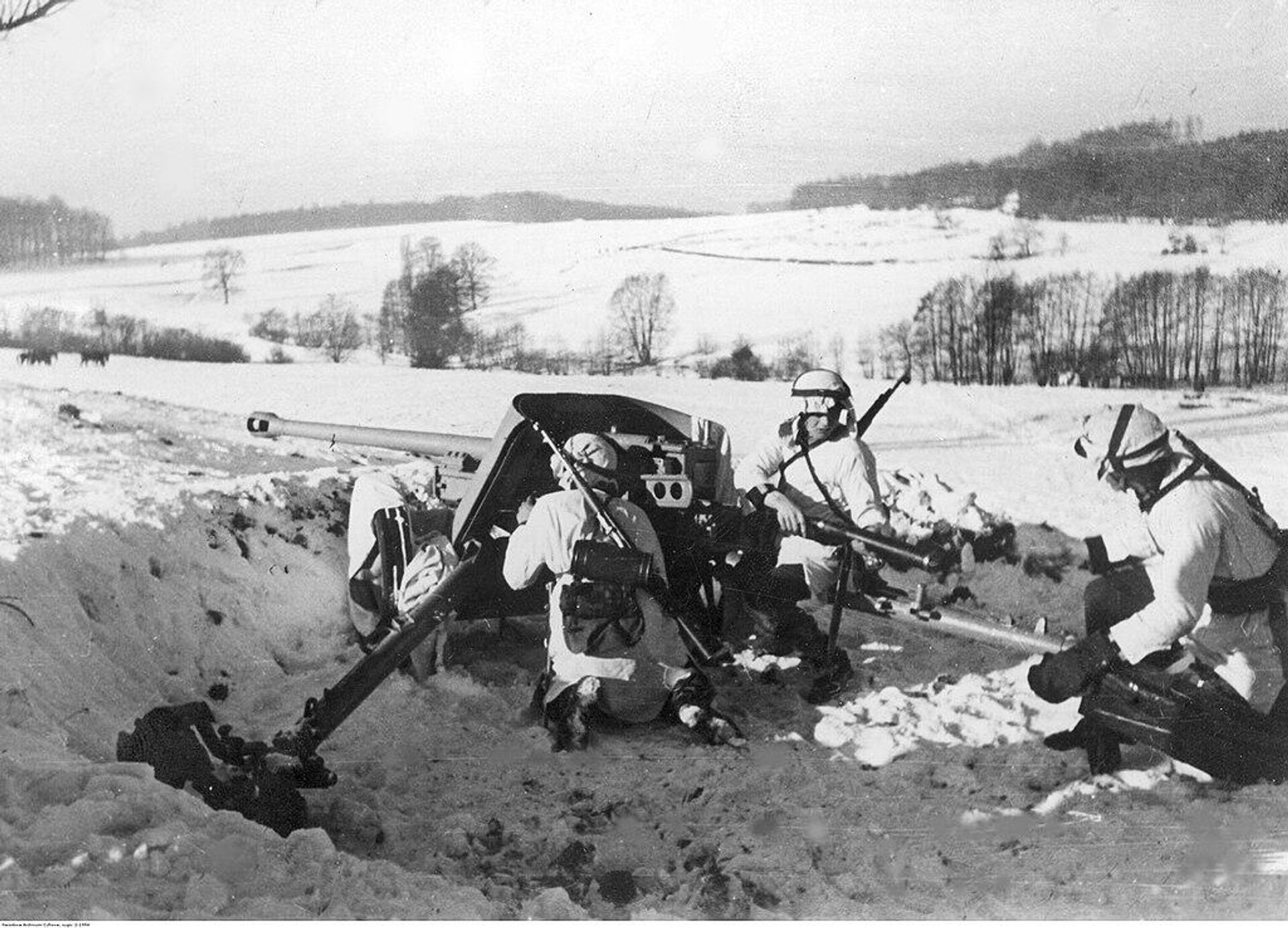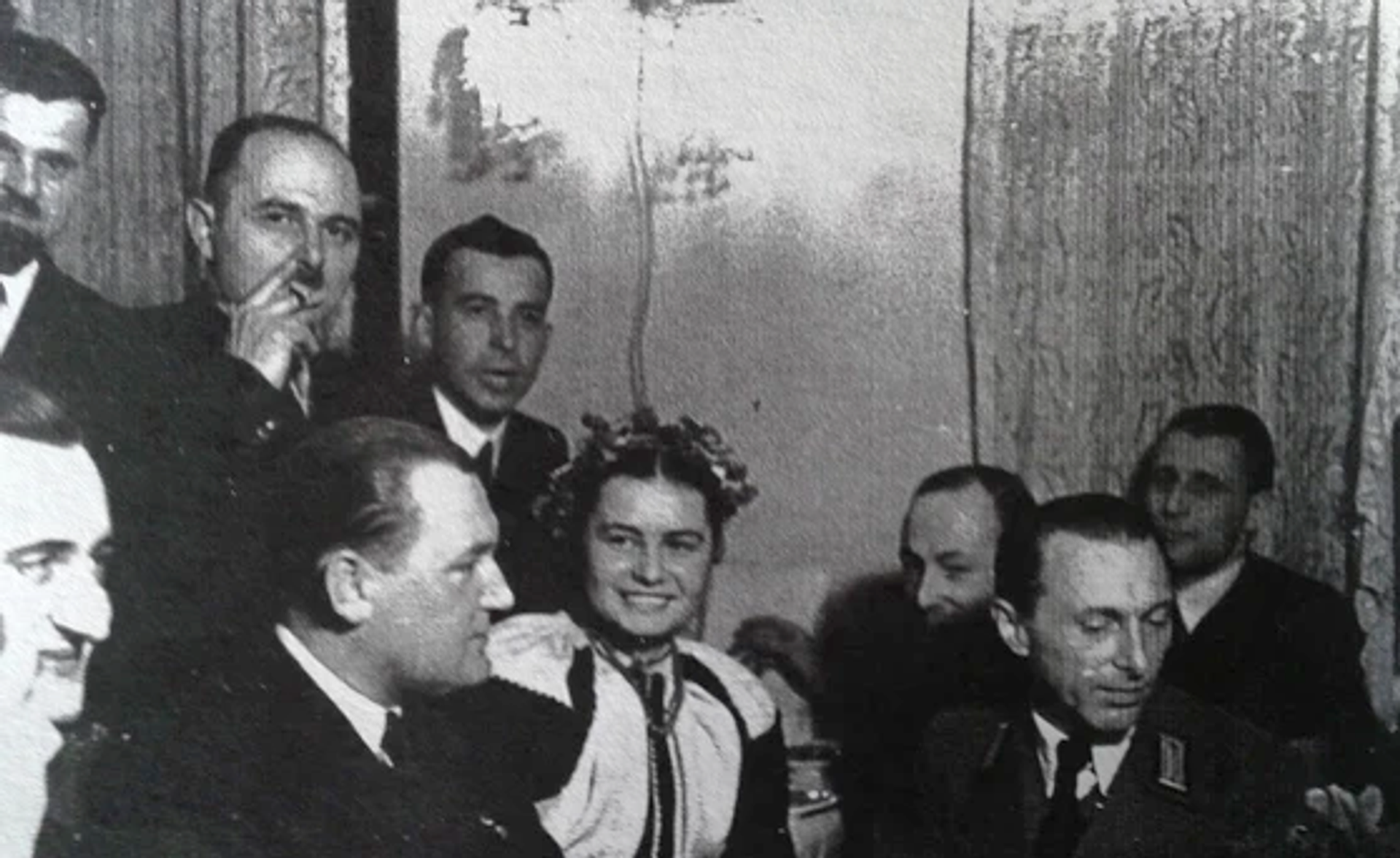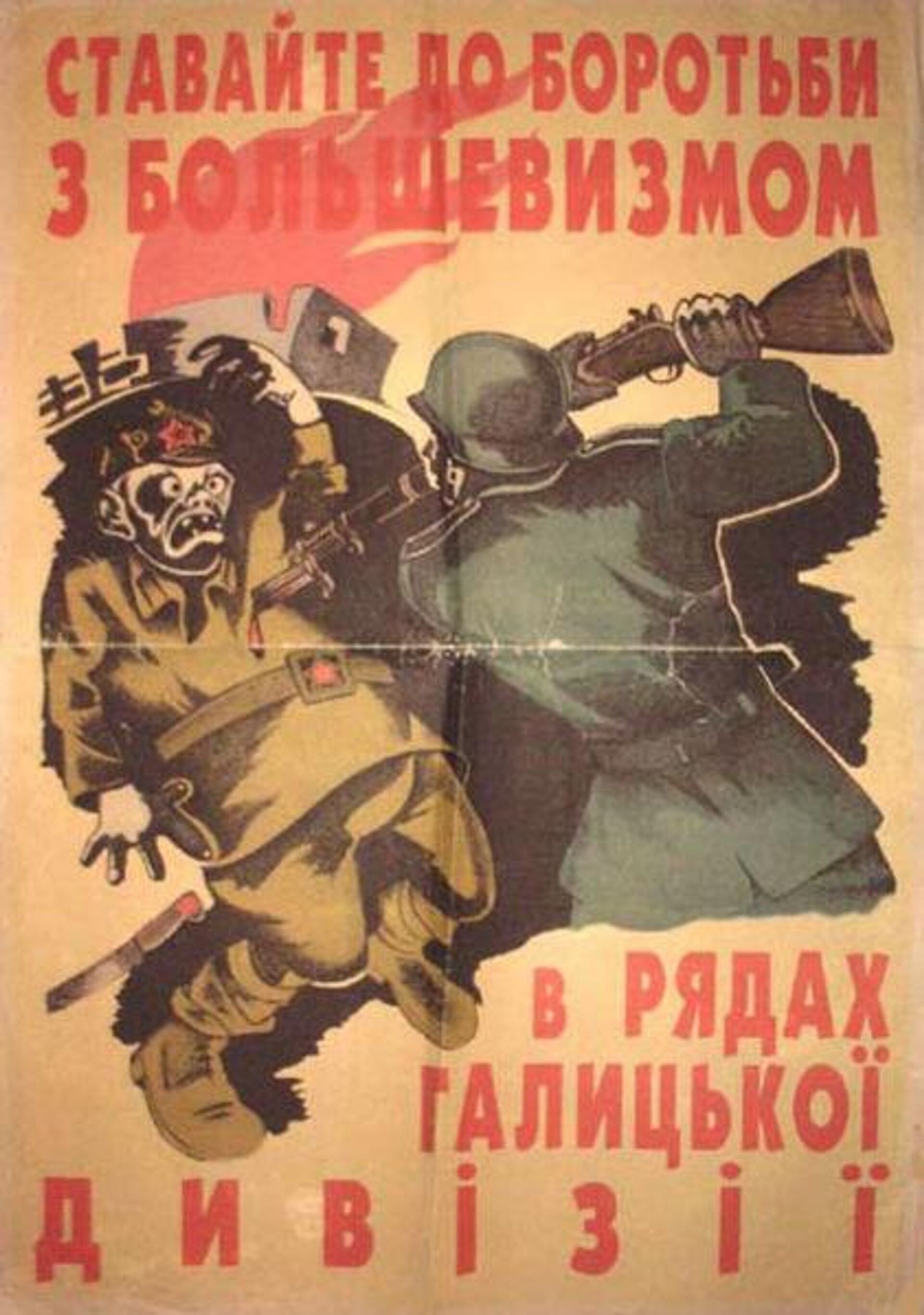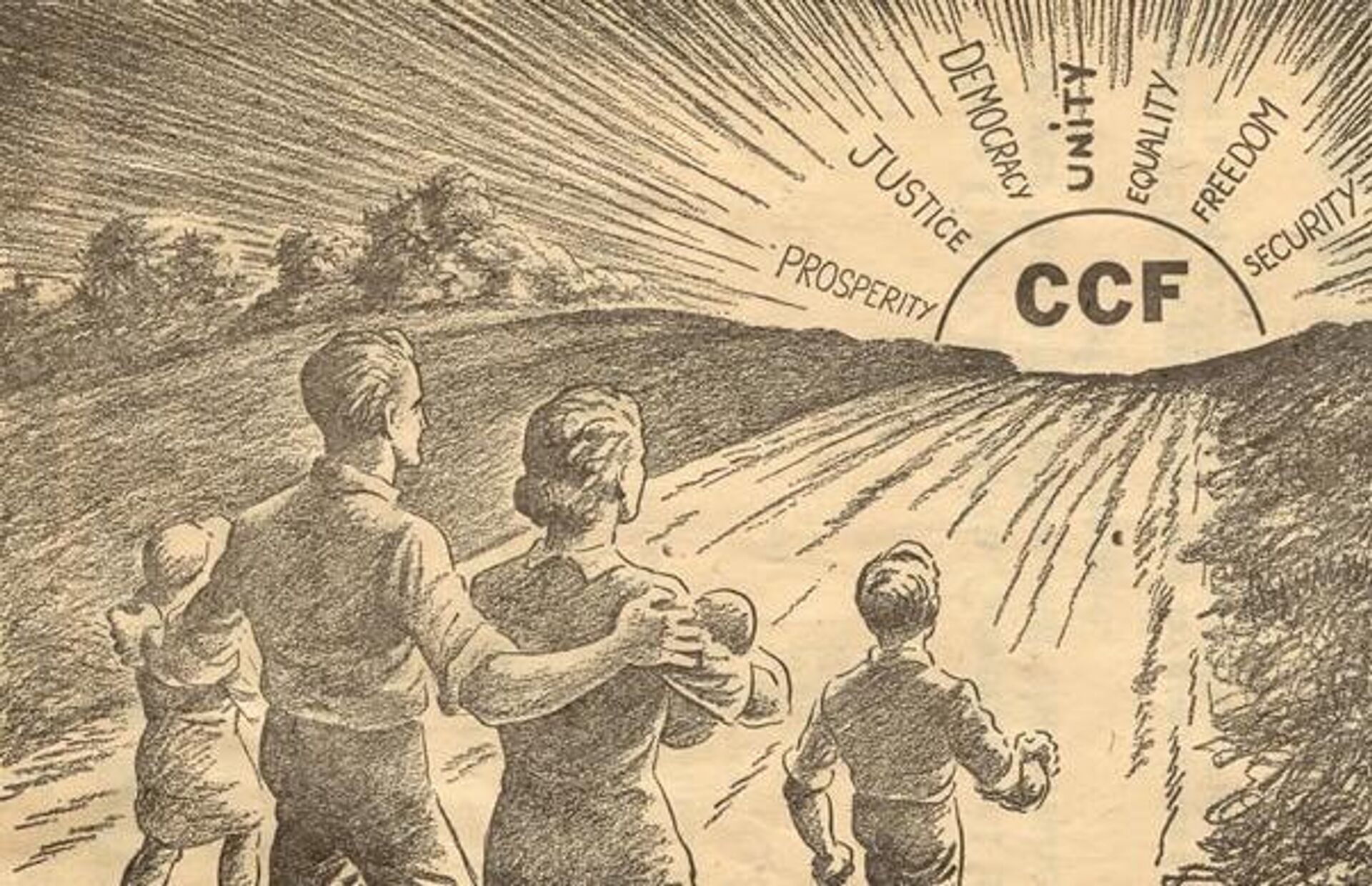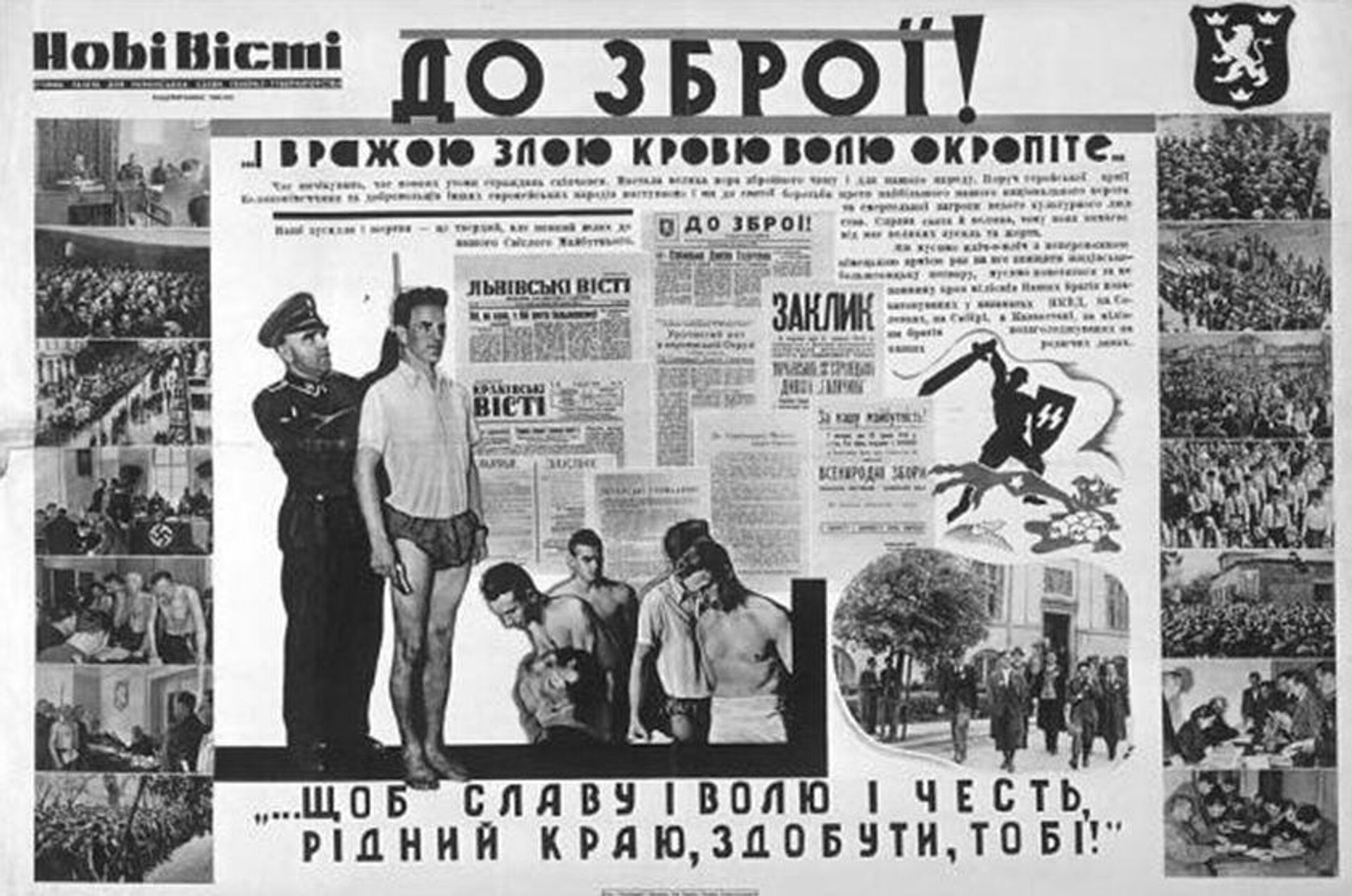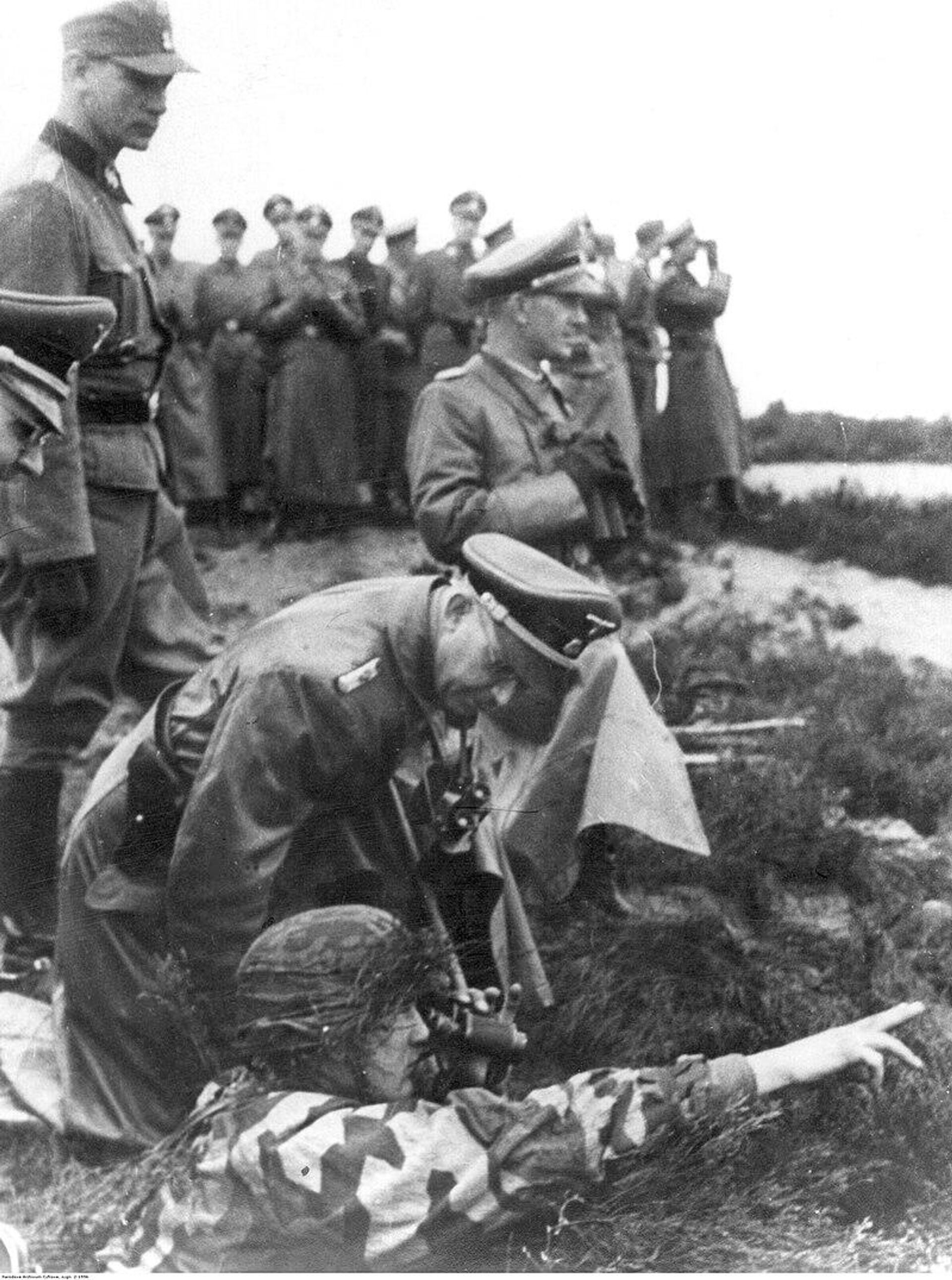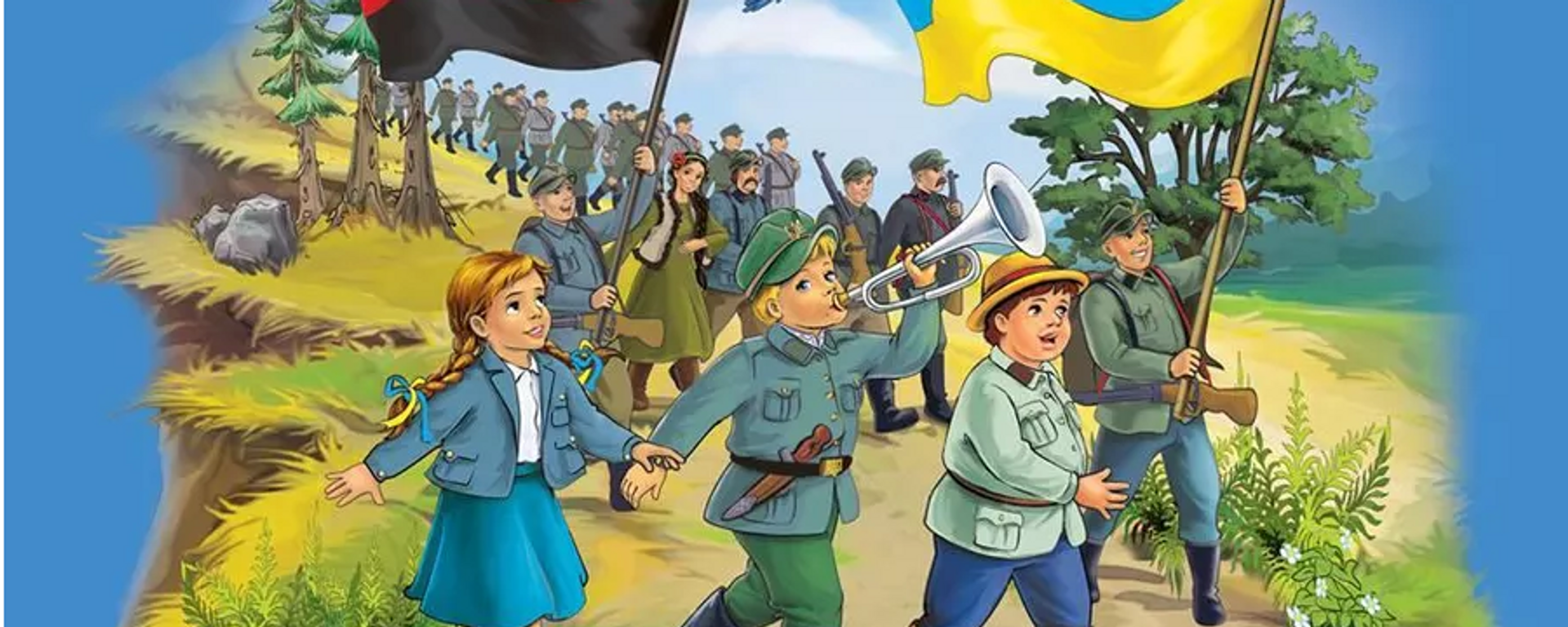https://sputnikglobe.com/20230925/untold-story-of-how-canada-became-a-safe-haven-for-ukrainian-wwii-era-nazis-1113656627.html
Untold Story of How Canada Became a Safe Haven for Ukrainian WWII-era Nazis
Untold Story of How Canada Became a Safe Haven for Ukrainian WWII-era Nazis
Sputnik International
Before World War II, Ukrainian Canadians were among the most tightly knit, pro-labor, pro-Moscow, and anti-fascist migrant communities living in the True North Strong and Free. That began to change after the war and the arrival of thousands of Ukrainian Nazi collaborators wanted for war crimes across Eastern Europe. This is their story.
2023-09-25T17:57+0000
2023-09-25T17:57+0000
2023-09-25T18:20+0000
justin trudeau
chrystia freeland
adolf hitler
canada
galicia
ukraine
nazi
waffen ss
ss
jews
https://cdn1.img.sputnikglobe.com/img/07e7/09/19/1113656234_0:84:1024:660_1920x0_80_0_0_70d420b7a07ce839284223a346935a4f.jpg
The scandal over the Canadian parliament’s move to honor Ukrainian Waffen SS veteran Yaroslav Hunka continues to swirl, with Canada's opposition leader, Poland, Jewish groups, Russia and the United Nations demanding accountability.Hunka, 98, was in attendance during Ukrainian President Volodymyr Zelensky’s address to the House of Commons last Friday, and was introduced to lawmakers as a veteran of the “struggle for Ukrainian independence against the Russians during the Second World War.” He received a standing ovation from the legislature.It soon emerged that the former soldier carried out his “struggle for Ukrainian independence” as a member of the infamous 14th Waffen Grenadier Division of the Nazi SS, also known as 14th SS-Volunteer Division Galicia.SS Galicia Division's Bloody PastBetween 1943 and its surrender to the Western allies in May 1945, 14th SS-Volunteer Division Galicia rampaged through Eastern Europe. It was used for “police actions” against Polish and Soviet partisans in western Ukraine and eastern Poland, deployed to wipe out up to hundreds of civilians at a time in the Polish settlements like Huta Pieniacka, Podkamien, Chodaczkowo Wielkie, Prehoryle, Smogligow, and Borow, and thrown into meat grinders against the Red Army (where it took heavy losses approaching 75 percent during brutal fighting at Brody, Lvov region in July 1944).The remnants of the division were evacuated and deployed in Slovakia in the late summer of 1944 to put down the Slovak National Uprising, and then sent to suppress partisan operations in Yugoslavia in January 1945. In March 1945, the formation retreated to Austria, taking heavy losses while trying to hold back Soviet forces in and around Graz during the desperate closing months of the war. Ukrainian fascist forces later incorporated into the division also took part in the suppression of the Warsaw Uprising between August and September of 1944, although the division itself did not take part.‘Nest for Nazi Criminals’Russian Ambassador to Canada Oleg Stepanov told Sputnik Monday that he would ask for explanations from Canada’s Ministry of Foreign Affairs and the Prime Minister’s Office over the Hunka incident, but said that he has “no illusions” about the possibility of working “with the current Trudeau cabinet, which is the personification of neoliberal fascism.” Stepanov pointed out that former Nazi criminals and their descendants have enjoyed “impunity” in Canada, with the country itself unfortunately becoming “a nest for Nazi criminals” after WWII, despite its status as a prominent member of the wartime Anti-Hitler Coalition.The scandal surrounding Hunka is not the first of its kind. In 2017, independent media outlet Consortium News was attacked by Canadian authorities after revealing that Chrystia Freeland, the senior Trudeau cabinet member then serving as Canada’s Minister of Foreign Affairs, had attempted to cover up her grandfather Mykhailo Khomiak’s past as an editor of a Nazi newspaper in occupied Poland during WWII.Canadian media later followed up on the allegations, confirming the information, and revealing that Freeland not only knew of her grandfather’s dark past, but helped edit an academic article in the Journal of Ukrainian Studies by her uncle, John-Paul Kimka, professor emeritus at the University of Alberta, in the 1990s a bid to whitewash the Nazi propagandist’s activities. When the news of her relative’s true past leaked out, Ottawa immediately characterized it as a “Russian disinformation” campaign aimed at “destabiliz[ing] Western democracies,” with Freeland claiming her grandparents fled the war in 1939 as “political exiles with a responsibility to keep alive the idea of an independent Ukraine.”After the escalation of the Ukrainian crisis in early 2022, Freeland, now deputy prime minister, got into more trouble after tweeting (and after public outrage deleting) a photo of herself holding a banner sporting the colors of the notorious fascist militant formation known as the Ukrainian Insurgent Army (Ukrainian acronym UPA), along with the UPA’s slogan “Slava Ukraini” (lit. “Glory to Ukraine”).Created in the 1930s as the paramilitary wing of the fascist Organization of Ukrainian Nationalists (OUN), the (UPA) was responsible for the killings of hundreds of thousands civilians in Nazi-occupied western Ukraine during World War II, among them ethnic Poles, Jews, Russians, anti-fascist Ukrainians, and later, as the Red Army advanced, Soviet soldiers.The formations, some of whose volunteers ultimately ended up joining Waffen SS Galicia, remained active until well after the war’s end. With the help of the US Office of Strategic Services, precursor to the Central Intelligence Agency (CIA), militants waged a campaign of terror across western Ukraine until the early 1950s, killing some 25,000 Soviet troops, intelligence personnel and policemen, plus over 32,000 civilians, including many government administrators. Like SS Galicia vets, some UPA collaborators ended up in Canada and other Western countries after the war.Two Very Different Ukrainian-Canadian CommunitiesCanada’s Ukrainian community is a powerful political and voting bloc, with the 1.3 million ethnic Ukrainians recorded in the 2016 census, making up over 8 percent the population of the provinces of Western Canada, and up to 4 percent of Canada’s population as a whole.Things weren’t always this way, however. In the 1920s, 1930s and 1940s, Canada’s 225,000-300,000 person-strong ethnic Ukrainian community was at the forefront of efforts to maintain close ties with their homeland, which was part of the USSR at the time, swelling the ranks of Canada’s Communist Party, creating the Soviet-friendly Ukrainian Labour Farmer Temple Association, and playing a major role in the formation of the Co-operative Commonwealth Federation (CCF) – the precursor to Canada’s modern-day social democratic party – the New Democratic Party.During the Spanish Civil War of 1936-1939, hundreds of Ukrainian-Canadians volunteered to join the 1,200 troop-strong Mackenzie-Papineau Battalion to fight Francisco Franco’s Nazi-backed fascist forces. After World War II broke out, the Ukrainian Canadian Congress was formed to encourage Ukrainian Canadians to enlist in the Armed Forces to fight Hitler, with over 35,000 joining, constituting the second-largest group of non-British, non-French origin Canadian citizens to do so.The Ukrainian nationalists’ entry to Canada became possible largely thanks to the Western Allies, with Britain interning thousands of SS Galicia fighters, first in Italy and then in United Kingdom proper, and preventing their deportation back to the Soviet Union to face war crimes trials.After surrendering to US and British forces in May 1945, SS Galicia troops were placed in a concentration camp near Rimini, northeastern Italy, where, thanks to intervention from the Vatican, which dubbed them “good Catholics and devoted anti-communists,” London changed their status from “prisoners of war” to “surrendered enemy personnel.”Wladyslaw Anders, a prominent Polish general and member of the Polish government-in-exile, also lobbied on the Ukrainian Waffen SS men’s behalf, calling them citizens of the Polish Second Republic, and not Soviets, because the volunteers came largely from territories which belonged to Poland during the interwar period. British authorities ignored a complaint filed by the Polish government filed to the United Nations against SS-Galicia in 1947 over the murder of 800 civilians at Huta Pieniacka, and overlooked the Nuremberg Trials’ classification of all SS formations as criminal organizations.A late 1940s report from Britain’s under-secretary of state declassified in 2015 privately admitted that Galicia “was an SS division and technically all of its officers and senior NCOs are liable for trial as war criminals.” Beryl Hughes, a Home Office official working to ship some of the 8,000 Ukrainian Nazi recruits held in Britain to Canada, admitted in correspondence in the mid-to-late 1940s that “what little we know of their war record is bad,” and that the UK was nevertheless “hoping to get rid of the less desirable Ukrainian PoWs either to Germany or Canada” instead of prosecuting them or sending them home.The Liberal government of Prime Minister Mackenzie King ignored these warnings, trusting assurances from the British Foreign Office that background checks were done to assure that these particular Waffen SS men did not engage in crimes against humanity, and that there was no evidence to show “in any way that they are infected with any trace of Nazi ideology.”In the mid-1980s, the government of Progressive Conservative Prime Minister Brian Mulroney formed a Commission of Inquiry on War Criminals in Canada to conduct amid a spate of media allegations that the country had unwittingly become a safe harbor for WWII-era war criminals.The commission concluded that the SS Galicia Division as a whole could not be held collectively responsible for the war crimes perpetrated by individual members, and controversially refused to accept evidence of said crimes from Eastern European countries and the USSR. “The Galicia Division…should not be indicted as a group,” and “charges of war crimes against members of the Galicia Division have never been substantiated, either in 1950 when they were first preferred, or in 1984 when they were renewed, or before this Commission,” the commission’s final report read.SS Galicia veterans, UPA fighters, other collaborators and their descendants eagerly welcomed the collapse of the USSR in 1991, working both independently and alongside powerful Western institutions of soft power to start rebuilding their influence in post-Soviet Ukraine, penning and donating textbooks, creating new civil society initiatives to transform societal consciousness and reimagine history, and lobbying to build monuments and memorial cemeteries dedicated to SS Galicia troops and other collaborators. Over the decades, their influence in Ukrainian political life and society steadily grew, with the 2005 color revolution and the 2014 coup cementing ultra-right nationalists’ grip on the country, leading to parades dedicated to SS Galicia’s creation, streets renamed and monuments erected to Nazi fighters and UPA militants, and WWII-era fascist forces and collaborators rebranded as 'fighters for Ukraine’s freedom.'Across the Atlantic, in Canada, efforts have also been made to whitewash wartime Ukrainian Nazis’ crimes. On Remembrance Day in November 2010, the Ukrainian Canadian Congress praised SS Galicia veterans as fighters for “freedom of their ancestral Ukrainian homeland.” The same year, commemorating the late president of the Canadian society of SS Galicia vets, the UCC assured that he would “be remembered as a hero of Ukraine who fought for her independence.”In 2020, Ukrainian groups in Canada honored Bohdan Panchuk, an activist behind the Ukrainian Canadian Servicemen’s Association, who helped bring upwards of 30,000 Ukrainian refugees to Canada after World War II, among them some 2,000 Galicia SS division fighters. According to Ukrainian historian Olesya Khromeychuk, Panchuk was able to do this by pushing a “positive narrative portraying the former Galicians as an anti-Soviet” German Army unit, and as victims who were forced into the fighting formation against their will, rather than fanatical nationalists eager to fight for Hitler.“The [Galicia] volunteers committed themselves to German victory, the New European Order, and to Adolf Hitler personally,” Anders Rudling, a professor specializing in Eastern European history from Sweden’s Lund University, told a Canadian military magazine in 2020.But don’t take a historian's word for it. Heinrich Himmler, Hitler’s right-hand man and the chief architect of the Final Solution, once gave the SS Galicia’s fighters the 'highest praise' he could muster.World Reacts to Trudeau's Embarassing StuntIn Canada and around the world, the outcry over Yaroslav Hunka's appearance in parliament was swift and unexpectedly massive.Pierre Poilievre, leader of Canada’s Conservative opposition, demanded a personal apology from Liberal Prime Minister Justin Trudeau.House Speaker Anthony Rota expressed “regret” and “remorse” over the decision to recognize Hunka, and offered his “deepest apologies” to Jews in Canada and around the world for hosting the Ukrainian Waffen SS vet, who expressed outrage over the display.NDP House Leader Peter Julian said Rota made an "unforgivable error which puts the entire House in disrepute" and called on the speaker to resign on Monday.Poland also demanded an apology from its Canadian ally Monday, with Polish Ambassador to Canada Witold Dzielski stressing that Warsaw would "never agree on whitewashing such villains."Finally, United Nations spokesperson Stephane Dujarric took note of Rota's apology, but reiterated that the UN "stands against any honoring of people who actively took part in Nazi activities during the Second World War."Even the mainstream Western media, which normally remains silent about NATO's support for and whitewashing of Ukrainian neo-Nazi groups amid the conflict with Russia, has published article after article on the scandal, recognizing it as a "PR disaster" for Trudeau and Zelensky.
https://sputnikglobe.com/20220411/zombification-nation-how-textbooks-for-young-ukrainians-teach-children-to-hate-russians-1094645369.html
canada
galicia
ukraine
ussr
soviet union
americas
Sputnik International
feedback@sputniknews.com
+74956456601
MIA „Rossiya Segodnya“
2023
News
en_EN
Sputnik International
feedback@sputniknews.com
+74956456601
MIA „Rossiya Segodnya“
Sputnik International
feedback@sputniknews.com
+74956456601
MIA „Rossiya Segodnya“
ukraine, world war ii, second world war, waffen ss, galicia, division, fighters, troops, forces, red army, wwii, war crimes, civilians, nazi, adolf hitler, heinrich himmler, canada, immigration, canadian-ukrainians, ukrainian canadians, legacy, war record
ukraine, world war ii, second world war, waffen ss, galicia, division, fighters, troops, forces, red army, wwii, war crimes, civilians, nazi, adolf hitler, heinrich himmler, canada, immigration, canadian-ukrainians, ukrainian canadians, legacy, war record
The scandal over the Canadian parliament’s
move to honor Ukrainian Waffen SS veteran Yaroslav Hunka continues to swirl, with Canada's opposition leader, Poland, Jewish groups, Russia and the United Nations demanding accountability.
Hunka, 98, was in attendance during Ukrainian President Volodymyr Zelensky’s address to the House of Commons last Friday, and was introduced to lawmakers as a veteran of the “struggle for Ukrainian independence against the Russians during the Second World War.” He received a standing ovation from the legislature.
It soon emerged that the former soldier carried out his “struggle for Ukrainian independence” as a member of the infamous 14th Waffen Grenadier Division of the Nazi SS, also known as 14th SS-Volunteer Division Galicia.
SS Galicia Division's Bloody Past
Formed in 1943 and made up mostly of ethnic Ukrainians, the Wehrmacht-subordinated fighting formation was recruited from among fascist radicals, and was responsible for the mass murder of anti-fascist and communist Ukrainians, Red Army troops, anti-fascist partisans, and Polish, Jewish, Russian and Slovak civilians.
Between 1943 and its surrender to the Western allies in May 1945, 14th SS-Volunteer Division Galicia
rampaged through Eastern Europe. It was used for “police actions” against
Polish and Soviet partisans in western Ukraine and eastern Poland, deployed to wipe out up to
hundreds of civilians at a time in the Polish settlements like Huta Pieniacka, Podkamien, Chodaczkowo Wielkie, Prehoryle, Smogligow, and Borow, and thrown into meat grinders against the Red Army (where it took heavy losses approaching 75 percent during brutal fighting at Brody, Lvov region in July 1944).
The remnants of the division were evacuated and deployed in
Slovakia in the late summer of 1944 to
put down the Slovak National Uprising, and then sent to suppress partisan operations in
Yugoslavia in January 1945. In March 1945, the formation retreated to Austria, taking heavy losses while trying to hold back Soviet forces in and around Graz during the desperate closing months of the war. Ukrainian fascist forces later incorporated into the division also took part in the suppression of the Warsaw Uprising between August and September of 1944, although the division itself did not take part.
‘Nest for Nazi Criminals’
Russian Ambassador to Canada Oleg Stepanov
told Sputnik Monday that he would ask for explanations from Canada’s Ministry of Foreign Affairs and the Prime Minister’s Office over the Hunka incident, but said that he has
“no illusions” about the possibility of working “with the current Trudeau cabinet, which is the personification of neoliberal fascism.” Stepanov pointed out that former Nazi criminals and their descendants have enjoyed “impunity” in Canada, with the country itself unfortunately becoming
“a nest for Nazi criminals” after WWII, despite its status as a prominent member of the wartime Anti-Hitler Coalition.
The scandal surrounding Hunka is not the first of its kind. In 2017, independent media outlet Consortium News was
attacked by Canadian authorities after
revealing that Chrystia Freeland, the senior Trudeau cabinet member then serving as Canada’s Minister of Foreign Affairs, had attempted to cover up her grandfather Mykhailo Khomiak’s past as an editor of a Nazi newspaper in occupied Poland during WWII.
Canadian media later
followed up on the allegations, confirming the information, and revealing that Freeland not only knew of her grandfather’s dark past, but helped edit an academic article in the Journal of Ukrainian Studies by her uncle, John-Paul Kimka, professor emeritus at the University of Alberta, in the 1990s a bid to whitewash the Nazi propagandist’s activities. When the news of her relative’s true past leaked out, Ottawa immediately characterized it as a “Russian disinformation” campaign aimed at “destabiliz[ing] Western democracies,” with Freeland claiming her grandparents fled the war in 1939 as “political exiles with a responsibility to keep alive the idea of an independent Ukraine.”
After the escalation of the Ukrainian crisis in early 2022, Freeland, now deputy prime minister, got into more trouble after tweeting (
and after public outrage deleting) a photo of herself holding a banner sporting the colors of the notorious fascist militant formation known as the Ukrainian Insurgent Army (Ukrainian acronym UPA), along with the UPA’s slogan “Slava Ukraini” (lit. “Glory to Ukraine”).
Created in the 1930s as the paramilitary wing of the fascist Organization of Ukrainian Nationalists (OUN), the (UPA) was responsible for the killings of hundreds of thousands civilians in Nazi-occupied western Ukraine during World War II, among them ethnic Poles, Jews, Russians, anti-fascist Ukrainians, and later, as the Red Army advanced, Soviet soldiers.
The formations, some of whose volunteers ultimately ended up joining Waffen SS Galicia, remained active until well after the war’s end.
With the help of the US Office of Strategic Services, precursor to the Central Intelligence Agency (CIA), militants waged a campaign of terror across western Ukraine until the early 1950s,
killing some 25,000 Soviet troops, intelligence personnel and policemen, plus over
32,000 civilians, including many government administrators. Like SS Galicia vets, some UPA collaborators ended up in Canada and other Western countries after the war.
Two Very Different Ukrainian-Canadian Communities
Canada’s Ukrainian community is a powerful political and voting bloc, with the 1.3 million ethnic Ukrainians recorded in the
2016 census, making up over 8 percent the population of the provinces of Western Canada, and up to 4 percent of Canada’s population as a whole.
The politically-active portion of the community has fervently supported attempts to turn their ancestral homeland into an anti-Russian stronghold for decades, supporting the 2004-2005 color revolution in Ukraine, and even more resolutely backing the Euromaidan coup in 2014, with the Conservative government of Stephen Harper going so far as to offer shelter to anti-government protesters at the Canadian Embassy in Kiev during the 2014 violence.
Things weren’t always this way, however. In the 1920s, 1930s and 1940s, Canada’s 225,000-300,000 person-strong ethnic Ukrainian community was at the forefront of efforts to maintain close ties with their homeland, which was part of the USSR at the time, swelling the ranks of Canada’s Communist Party, creating the Soviet-friendly Ukrainian Labour Farmer Temple Association, and playing a
major role in the formation of the Co-operative Commonwealth Federation (CCF) – the precursor to Canada’s modern-day social democratic party – the New Democratic Party.
It was partly thanks to the efforts of hardworking Ukrainian Canadians that Canada became one of the Western world’s first socially-oriented nations, with CCF-run Saskatchewan becoming the first region in North America to elect a socialist government in 1944, and introducing universal medicine in the province in the early 1960s (with the idea quickly spreading across Canada shortly thereafter).
During the Spanish Civil War of 1936-1939,
hundreds of Ukrainian-Canadians volunteered to join the 1,200 troop-strong Mackenzie-Papineau Battalion to fight Francisco Franco’s Nazi-backed fascist forces. After World War II broke out, the Ukrainian Canadian Congress was formed to encourage Ukrainian Canadians to enlist in the Armed Forces to fight Hitler, with
over 35,000 joining, constituting the second-largest group of non-British, non-French origin Canadian citizens to do so.
Things began to change after World War II, with the gradual arrival of thousands of battle-hardened fascists, including former fighters from the UPA and 14th SS-Volunteer Division Galicia, along with nationalist ideologues like Mrs. Freeland’s grandfather, slowly transforming Canada’s Ukrainian community from a Russia-friendly, socially progressive anti-fascist stronghold into a nationalist, anti-communist, anti-Russia base of operations seeking to break Ukraine off from its centuries-old union with its eastern neighbor.
The Ukrainian nationalists’ entry to Canada became possible largely thanks to the Western Allies, with Britain interning thousands of SS Galicia fighters, first in Italy and then in United Kingdom proper, and preventing their deportation back to the Soviet Union to face war crimes trials.
After surrendering to US and British forces in May 1945, SS Galicia troops were placed in a concentration camp near Rimini, northeastern Italy, where, thanks to intervention from the Vatican, which dubbed them “good Catholics and devoted anti-communists,” London changed their status from “prisoners of war” to “surrendered enemy personnel.”
Wladyslaw Anders, a prominent Polish general and member of the Polish government-in-exile, also lobbied on the Ukrainian Waffen SS men’s behalf, calling them citizens of the Polish Second Republic, and not Soviets, because the volunteers came largely from territories which belonged to Poland during the interwar period. British authorities ignored a complaint filed by the Polish government filed to the United Nations against SS-Galicia in 1947 over the murder of 800 civilians at Huta Pieniacka, and overlooked the Nuremberg Trials’ classification of all SS formations as criminal organizations.
A late 1940s report from Britain’s under-secretary of state declassified in 2015
privately admitted that Galicia “was an SS division and technically all of its officers and senior NCOs are liable for trial as war criminals.” Beryl Hughes, a Home Office official working to ship some of the 8,000 Ukrainian Nazi recruits held in Britain to Canada, admitted in correspondence in the mid-to-late 1940s that
“what little we know of their war record is bad,” and that the UK was nevertheless
“hoping to get rid of the less desirable Ukrainian PoWs either to Germany or Canada” instead of prosecuting them or sending them home.
The anti-fascist Association of United Ukrainians in Canada appeared to have seen through British authorities collusion with Ottawa early on, urging Canadian immigration authorities not to let the Galicia fighters in, saying that “Ukrainian Division (Galicia) was part and parcel of the Hitler Army,” and that it “was against them that our Canadian boys fought on the battlefields of Italy.”
The Liberal government of Prime Minister Mackenzie King
ignored these warnings, trusting
assurances from the British Foreign Office that background checks were done to assure that these particular Waffen SS men did not engage in crimes against humanity, and that there was no evidence to show “in any way that they are infected with any trace of Nazi ideology.”
In the mid-1980s, the government of Progressive Conservative Prime Minister Brian Mulroney formed a Commission of Inquiry on War Criminals in Canada to conduct amid a spate of media allegations that the country had unwittingly become a safe harbor for WWII-era war criminals.
The commission concluded that the SS Galicia Division as a whole could not be held collectively responsible for the war crimes perpetrated by individual members, and controversially refused to accept evidence of said crimes from Eastern European countries and the USSR. “The Galicia Division…should not be indicted as a group,” and “charges of war crimes against members of the Galicia Division have never been substantiated, either in 1950 when they were first preferred, or in 1984 when they were renewed, or before this Commission,” the commission’s
final report read.
SS Galicia veterans, UPA fighters, other collaborators and their descendants eagerly welcomed the collapse of the USSR in 1991, working both independently and alongside powerful Western institutions of soft power to start rebuilding their influence in post-Soviet Ukraine, penning and donating textbooks, creating new civil society initiatives to transform societal consciousness and reimagine history, and lobbying to build monuments and memorial cemeteries dedicated to SS Galicia troops and other collaborators. Over the decades, their influence in Ukrainian political life and society steadily grew, with the 2005 color revolution and the 2014 coup cementing ultra-right nationalists’ grip on the country, leading to parades dedicated to SS Galicia’s creation, streets renamed and monuments erected to Nazi fighters and UPA militants, and WWII-era fascist forces and collaborators rebranded as 'fighters for Ukraine’s freedom.'
Across the Atlantic, in Canada, efforts have also been made to whitewash wartime Ukrainian Nazis’ crimes. On Remembrance Day in November 2010, the Ukrainian Canadian Congress
praised SS Galicia veterans as fighters for “freedom of their ancestral Ukrainian homeland.” The same year, commemorating the late president of the Canadian society of SS Galicia vets, the UCC
assured that he would “be remembered as a hero of Ukraine who fought for her independence.”
In 2020, Ukrainian groups in Canada honored Bohdan Panchuk, an activist behind the Ukrainian Canadian Servicemen’s Association, who helped bring upwards of 30,000 Ukrainian refugees to Canada after World War II, among them some 2,000 Galicia SS division fighters. According to Ukrainian historian Olesya Khromeychuk, Panchuk was able to do this by pushing a
“positive narrative portraying the former Galicians as an anti-Soviet” German Army unit, and as victims who were forced into the fighting formation against their will, rather than fanatical nationalists eager to fight for Hitler.
“The [Galicia] volunteers committed themselves to German victory, the New European Order, and to Adolf Hitler personally,” Anders Rudling, a professor specializing in Eastern European history from Sweden’s Lund University,
told a Canadian military magazine in 2020.
But don’t take a historian's word for it. Heinrich Himmler, Hitler’s right-hand man and the chief architect of the Final Solution, once gave the SS Galicia’s fighters the 'highest praise' he could muster.
"Your homeland has become so much more beautiful since you have lost – on our initiative, I must say – those residents who were so often a dirty blemish on Galicia’s good name, namely the Jews…I know that if I ordered you to liquidate the Poles…I would be giving you permission to do what you are eager to do anyway,” Himmler
said in an address to members of the division.
World Reacts to Trudeau's Embarassing Stunt
In Canada and around the world, the outcry over Yaroslav Hunka's appearance in parliament was swift and unexpectedly massive.
Pierre Poilievre, leader of Canada’s Conservative opposition, demanded a
personal apology from Liberal Prime Minister Justin Trudeau.
“No parliamentarians (other than Justin Trudeau) had the opportunity to vet this individual’s past before he was introduced and honored on the floor of the House of Commons,” Poilievre wrote in a social media post Sunday. “Without warning or context, it was impossible for any parliamentarian in the room (other than Mr. Trudeau) to know of [Hunka’s] dark past. Mr. Trudeau must personally apologize and avoid passing the blame to others as he always does,” he added.
House Speaker Anthony Rota expressed “regret” and “remorse” over the decision to recognize Hunka, and offered his
“deepest apologies” to Jews in Canada and around the world for hosting the Ukrainian Waffen SS vet, who
expressed outrage over the display.
NDP House Leader Peter Julian said Rota made an "unforgivable error which puts the entire House in disrepute" and called on the speaker to resign on Monday.
Poland also demanded an apology from its Canadian ally Monday, with Polish Ambassador to Canada Witold Dzielski
stressing that Warsaw would "never agree on whitewashing such villains."
Finally, United Nations spokesperson Stephane Dujarric took note of Rota's apology, but reiterated that the UN "stands against any honoring of people who actively took part in Nazi activities during the Second World War."
Even the mainstream Western media, which normally remains silent about NATO's support for and whitewashing of Ukrainian neo-Nazi groups amid the conflict with Russia, has published
article after
article on the scandal, recognizing it as a
"PR disaster" for Trudeau and Zelensky.

